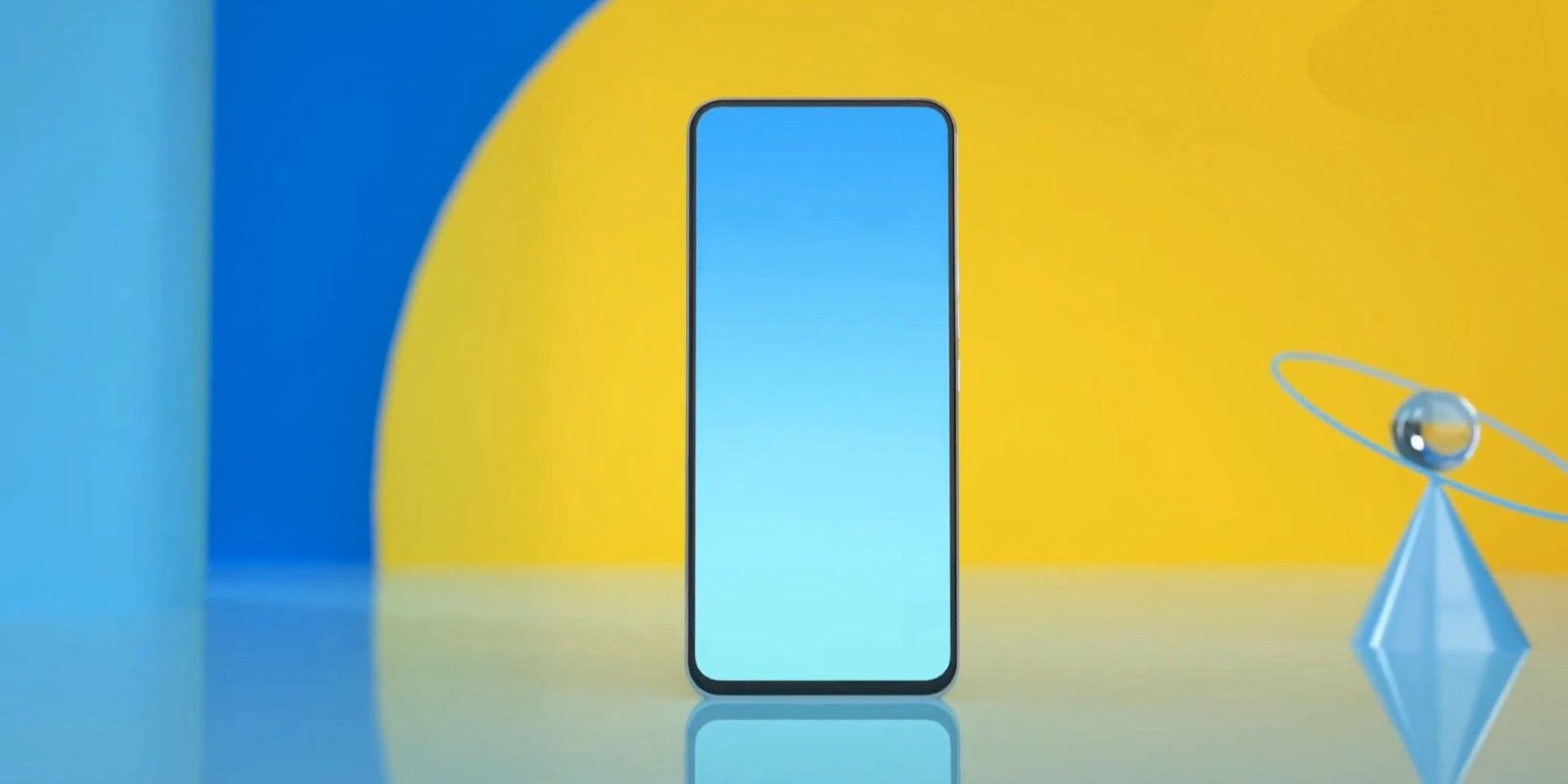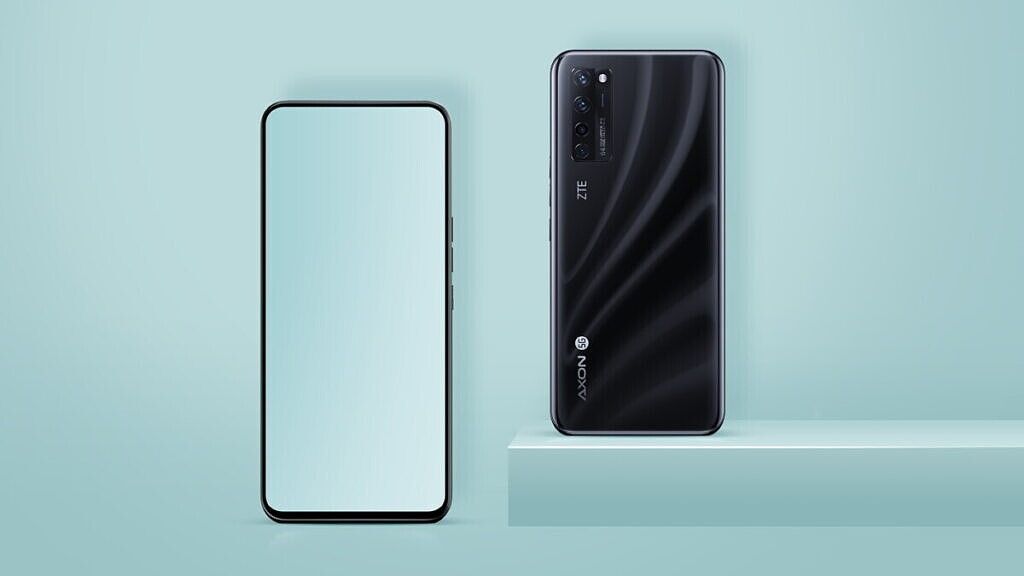
A decent front-facing camera is important for any smartphone. How else are you take the perfect selfie with your adoring cat? Alternatively, you could use it for business meetings or chatting to family and friends, but you get the gist.
One thing smartphone manufacturers have long desired is an under-display smartphone camera. Instead of the front-facing camera poking out of the top of the screen, or requiring a cutout, it just exists perfectly under the screen.
Well, the time for under-screen cameras is now---here's how they work.
Your smartphone front-facing camera is visible to you. Whether you have an iPhone, Samsung, OnePlus, Huawei, or something different, the front-facing camera requires a small screen cut out. Understandably, otherwise, your front-facing camera would only take pictures of the rear of the smartphone screen.
As smartphone bezels become smaller and smartphone design pushes toward a single sheet of glass, many believe that the front-facing camera cut out is a blemish, spoiling an otherwise perfect screen.
The answer to the problem? Put the front-facing camera under the screen. Of course, the answer seems obvious, so why has no smartphone manufacturer brought an under-screen front-facing smartphone camera to market?
In truth, that answer is a little more convoluted, concerning development, pricing, and technology.
Although under-screen cameras have hit the news a few times in recent years, the announcement largely focuses on prospective development. Xiaomi made waves in 2019 after releasing a series of slides detailing its under-screen camera development.
Another manufacturer, OPPO, also revealed a working under-screen front-facing camera in 2019. Its announcement at MWC Shanghai 2019 was a hit at the smartphone-focused tech show, though OPPO made it clear that the under-screen camera was a work in progress, destined for a future device.
Then, at IFA 2020, ZTE revealed the Axon 20 5G, the first smartphone to feature a front-facing under-screen camera---that you can actually buy. So, how does an under-screen camera work?
Regarding the ZTE Axon 20 5G, the under-screen camera requires several different technologies working in conjunction (some of them new).
The first thing required is a new screen type. ZTE developed a new "high transparency material" that includes new organic and inorganic films. The newly developed material allows greater levels of light to pass through the screen to reach the camera.

Second, the Axon 20 5G requires special internal workings. An independent control chip with integrated driver circuits provides completely separate color synchronization for light passing through the display. The extra control chip allows the camera to filter out any light and color distortion the camera experiences from the screen, keeping images clear and free of interference.
ZTE also created a "special matrix" that optimizes pixels, providing greater display consistency across the under-screen camera area. The increase in consistency through the matrix ensures the screen looks exactly the same throughout, rather than a small, distorted area.
Finally, the Axon 20 5G's under-screen camera uses a special algorithm to optimize performance during operation. The algorithm considers multiple inputs through the screen, adjusting lighting, contrast, and other dynamic ranges before snapping a photo.
So, how is the quality of the camera?
In late August 2020, the General Manager of Axon products, Mr. Lei, sent a selfie using the Axon 20 5G under-screen camera. ZTE uploaded the selfie to Weibo, the Chinese social media site.

Sure, it is "just" a selfie, but considering the camera location, the quality is particularly good.
Of course, the introduction of under-screen cameras raises another issue: broken phone screens. With more advanced screens, easily fixing your cracked screen suddenly becomes more difficult.
A quick word on the ZTE Axon 20 5G specs. Aside from the under-screen camera and the extra circuitry wizardry, the Axon 20 5G comes with a 6.92-inch FHD+ display, a Snapdragon 765G processor, and multiple memory and storage configurations.
The rear-facing camera is 64-megapixels, flanked by three additional sensors. This alone is a great feature, but adds to the question "Why does my phone need more than one camera?" It also has a 4,220mAh battery that also supports fast charging. Here's the ZTE reveal advert:
Unfortunately, the only picture currently available from the ZTE Axon 20 5G under-screen camera is the selfie mentioned above. Now, I'm sure Mr. Lei is a jolly nice chap, but it doesn't give much else away.
There is another common question regarding an under-screen smartphone camera. Can you see the camera under the screen? Is it obvious that a camera lurks behind the glass?
From the images provided by ZTE, the Axon 20 5G appears to hide the under-screen camera from the user. Without a hands-on experience with the smartphone itself, it is impossible to comment accurately. Where a single top-down or face-on shot hides the under-screen camera perfectly, a side-angle in certain light might reveal a little more.
The Xiaomi solution, detailed in the Tweet in the first section of the article, indicates that the under-screen camera area on its device will reveal when selfie mode activates. The front-facing camera remains completely obscured until that moment, giving users the sheer slab of glass effect many desire.
Similarly, OPPO uses a custom multi-layered transparent material that allows light into the camera but does not interfere with the display. That said, hands-on experiences with the OPPO test model suggest the camera is visible at certain angles and in certain conditions.
If you're looking for a new smartphone, check out which device has the best camera.
Are the other major smartphone manufacturers considering under-screen cameras for their flagship devices? There is speculation that the Samsung Galaxy S21 will feature some form of under-screen front-facing camera, although, at the time of writing, nothing is confirmed.
Apple is also seemingly non-committal to an under-screen front-facing camera. There was an alleged leak of an iPhone 13 prototype in mid-2020, although it's fair to say there was zero-confirmation of its similarities to an actual iPhone 13. The supposed prototype did not feature any front-facing camera cutout, leading to speculation that the iPhone 13 will include an under-screen camera. But that's all speculation, and the only people who truly know are Apple employees.
Samsung, Apple, and other manufacturers will continue to develop under-screen camera solutions until the image quality isn't affected, the cost of development and implementation is beneficial, or a combination of both.
For now, the ZTE Axon 20 5G is the only smartphone on the market offering an under-screen camera.